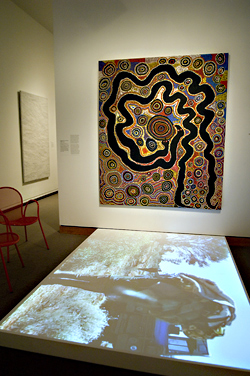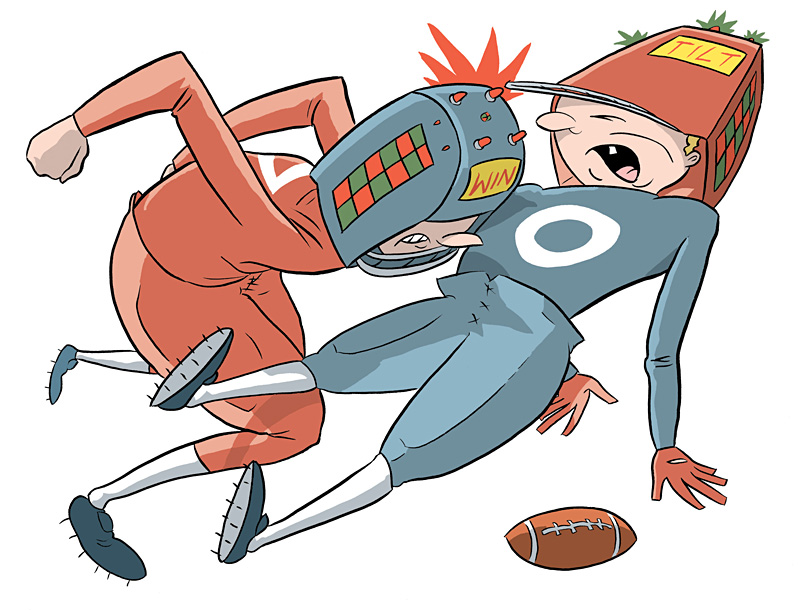Like most museum-goers, I’m often struck by that sometimes-bizarre disconnect between the setting in which the artifacts were originally created—a penniless artist’s garret; a mud hut—and the gleaming, prosperous surroundings in which they are now displayed. One of my favorite pieces at the new SAM allows you to confront that disconnect directly. Just below a painting by western Australian aborigines, there is a raised screen running horizontally along the floor that shows video footage of the piece as it was created in 2003. You watch as 17 natives of the Great Victoria Desert sit in a circle in the dust, with dogs darting in and out, and perform the “nonhierarchical” creation of this acrylic-on-linen dot painting that depicts a combination of geography and mythology. (A second painting, by a group of women, is also being made in the video. Somehow the women look like they’re having more fun.) The piece is one of the promised gifts that SAM has received on its 75th anniversary from local collectors, this one from Margaret Levi (a UW international studies professor) and Robert Kaplan. Standing there and looking from screen to wall, you’re forced to consider a host of questions about what it means to hang something that was created in the dirt on another continent on the pristine wall of a Seattle institution. And you also wonder: Why does the painting seem to have been hung sideways?
My SAM Favorites (No. 1 in a Series)








